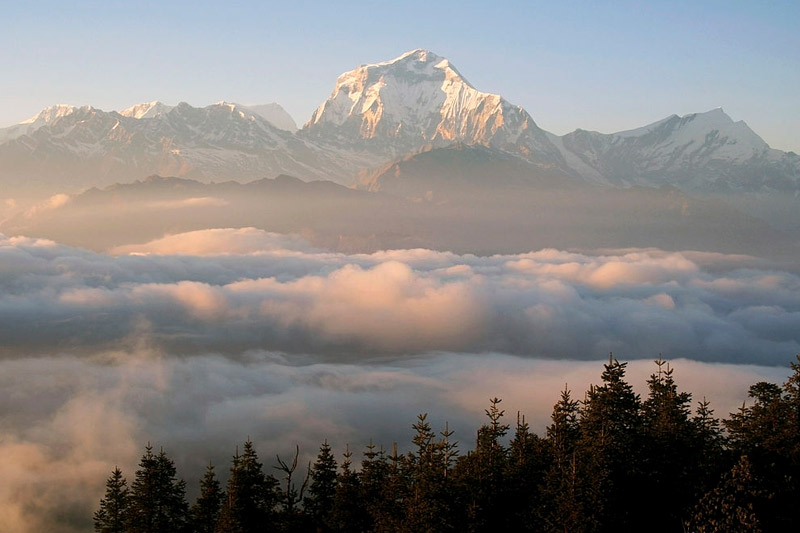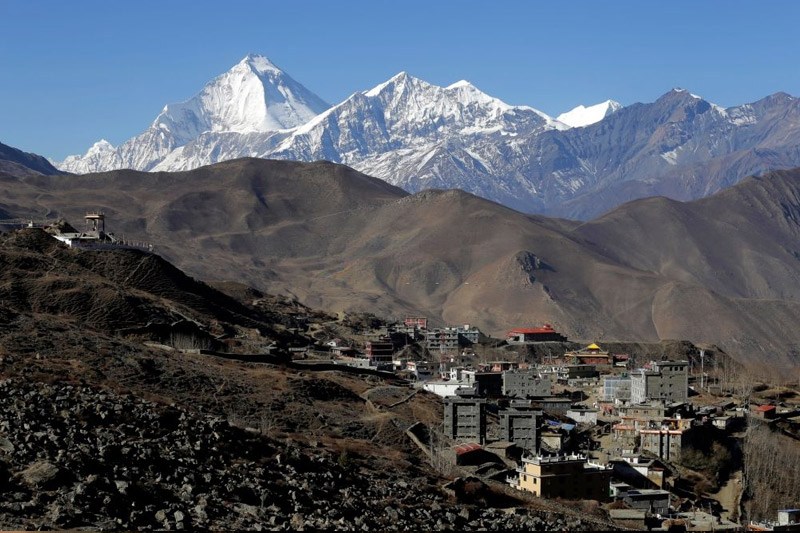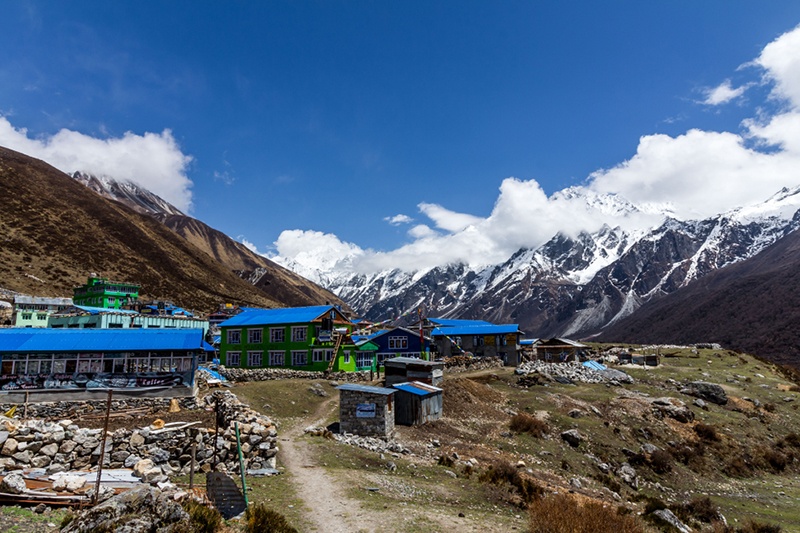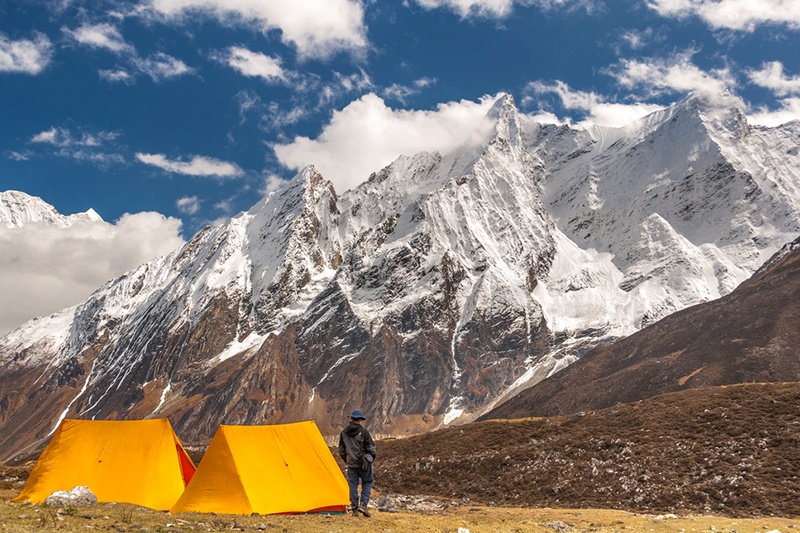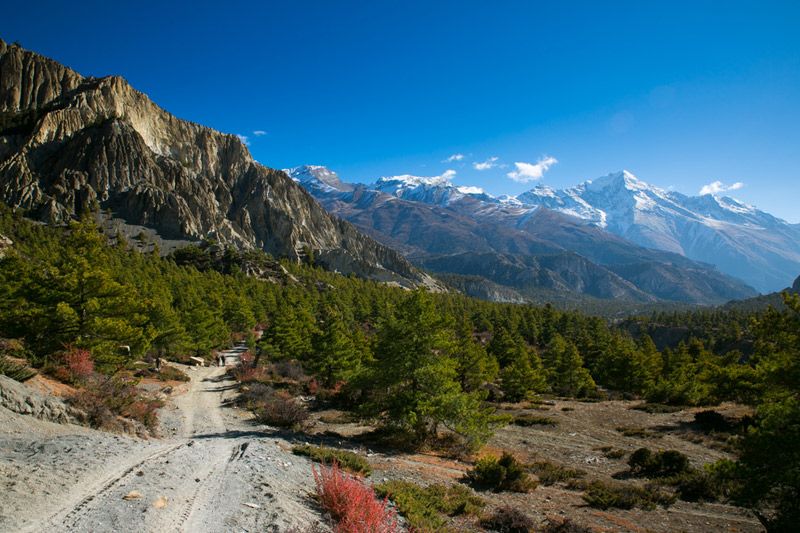Tsum Valley Trekking
Trip Overview of Tsum Valley Trekking
The Tsum Valley called the “hidden valley”, situated in northern Gorkha district of Nepal. Tsum comes from the Tibetan word “Tsombo” which means bright. The Tsum Valley Trekking trail heads up the valley of the Budi Gandaki River through wild and unexplored country inhabited mainly by members of the Gurung ethnic groups.
Upper Tsum valley (part of the Inner Himalaya) open from Chhokangparo, where hospitable local people (Tibetan group “Tsombo”) welcome you with traditional Tibetan Chiya (butter tea) and local meal. The Tsum Valley is extremely rich in cultural assets. The valley is dotted with gompas (Buddhist monasteries), chortens and mani walls. The longest mani walls (over 250m) are at Dzong and Phurpe. The Tsum valley preserves steps of the great Buddhist Yogi Chyuchin Milarepa and story about Guru Padmasambhava circumambulation. The people here never slaughter animals, even as a sacrifice to the gods. The Tsum Valley is surrounded by the Buddha Himal and Himal Chuli to the west, Ganesh Himal to the south, and Sringi Himal to the North.
Detail itinerary of Tsum Valley Trekking
-
DAY 01
Arrive Kathmandu
It's a panoramic thrill flying into Kathmandu on a clear day. The views of snow-capped mountain peaks sprawling down below you are almost ecstatic, beginning a whole chain of memorable experiences that stay with you for a long, long time. And as your plane Green Valley Treks staffs our team meet and greet you at the airport and escort you to your hotel.
-
DAY 02
From Kathmandu drive to Arughat Bazaar (8-9 hours)
We take an 8-9 hrs bus ride to Arughat Bazaar in Gorkha district. The village of Arughat is in two parts, on opposite sides of the Buri Gandaki. Arughat Bazaar is large, clean and prosperous with hotels and shops selling cloth, food and hardware.
-
DAY 03
Arughat to Soti Khola (6-7 hours)
From Arughat Bazar we trek to Soti Khola. Along the way we enjoy splendid views of Shringri Himal. We trek through Gurung and Magar villages, past fields and cascading waterfalls, till we reach Soti Khola.We set up camp on the banks of the Soti Khola(‘khola' means river in Nepali).
-
DAY 04
Soti Khola to Machha Khola (6-7 hours)
We trek from Soti Khola to Machha khola (Fish river). Machha khola is a village situated above a stream with the same name. We camp for the night by a wide campsite.
-
DAY 05
Machha Khola to Doban (6-7 hours)
The trail from Macha Khola to Doban involves some steep ascents and descents. We climb a well – crafted staircase over a ridge to Doban. Doban lies at the confluence of the Shiar Khola, which flows from the east, and the Sarpu khola, which flows from the west.
-
DAY 06
Doban to Philim (6 hours)
The route climbs ona rugged rocky trail. We climb up and down ravines and notched trees. We get good views of Sringri himal as we continue up to the village of Philim at 1550m.This is a large Gurung village with fields of corn and millet. There are several good campsites and we set up camp surrounded by alder, blue pine and poplar trees.
-
DAY 07
Philim to Chumling (Lower Tsum) (7 hours)
We take the trail up through Philim and head up over a ridge that leads to Ganesh Himal Base camp and Chumling( Lower Tsum). We camp for the night at Chumling. There are several good campsites at Chumling.
-
DAY 08
Chumling to Chhokangparo (Upper Tsum) (5-6 hours)
Chhokangparo.Chhekamparo is a village situated on flat land and made up of two settlements Chhekam and Paro. From the valley, the Ganesh Himal range can be seen directly to the south where it provides spectacular views of the Baudha and Himal chuli peaks to the south-west. Some households in this village practice polyandry.
-
DAY 09
Chhokangparo to Nile/Chhule, visit Milarepa Piren Phu Cave on the way (6-7 hours)
From Chhokangparo we trek to Nile/ Chulle. This is the last village heading north in the upper Tsum Valley. Nile is on the western, sun-side of the Shiar Khola, about 20 minutes walk across from Chhule. On the way we pass the Piren Phu cave. Piren Phu (pigeon cave) is one of the most sacred caves in the Tsum valley. It is located at the foot of a rugged cliff near the village of Burji. Milarepa, the famous Tibetan saint, was believed to have meditated here. There are two separate gumbas attached to the rocky cave. Richly painted Buddhist murals, excellent artistic scripts carved on stones, long prayer flags and significant Buddhists paper scripts make this cave one of the most important socio-cultural asset in the valley.Beautiful views can be had of the Shiar Khola, Rachen Gumba, the mountains and settlements amidst vast agricultural land.
-
DAY 10
Nile/Chhule to Mu Gompa (3700 m), visit Dhephyudonma Gompa (4060 m) (4 hours)
From Nile the trail gradually ascends to Mu gumba, the largest monastery in the region. Mu Gumba is located at the highest and farthest point in the Tsum valley. Mu Gumba was established in 1895 AD and is situated at an altitude of 3510m.The monastery houses religious books, including Kangyur, a life sized statue of Avalokiteshwara, and images of Guru Padmasambhava and Tara. Dephyudonma Gumba is one of the oldest monasteries in the Tsum Valley and is situated in the rugged mountains, a 2 hr walk from the village of Chhule and Nile. The history of this monastery is directly associated with the dawn of Buddhism in the valley. The monastery is run by Lama Serap of Nile Ladrang from the Kangin sect. There are a few campsites and dinking water facilities.
-
DAY 11
Extra day for excursion
We take a hike up Mu Gumba and reach the base of Pika Himal (4865m).We are quite close to Tibet and get a good view of the Tibetan peaks as well as the Ganesh Himal range. After the day's excursion we return to our camp at Mu gumba.
-
DAY 12
Mu Gompa to Rachen Gompa (5 hours)
From Mu Gumba we take the trail to Rachen Gumba, a nunnery. The nunnery is situated in the Shiar Khola Valley in the foothills of the mountains bordering Nepal and Tibet. Rachen Gumba was established in the year 1905 AD and is one of the largest nunneries in the Tsum valley. It houses nuns belonging to the Ngak-pa sect, which does not allow animal slaughter. The nunnery houses one thousand clay, moulded statues of Avalokiteshwara, a brightly colored, carved throne and pillar, and a large prayer wheel. The interior is richly painted with murals about Buddhism and its history.
-
DAY 13
Rachen Gompa to Dumje (6-7 hours)
From Rachen Gompa we proceed towards Dumje, a small village with about eight houses and adjoining cattle shed.
-
DAY 14
Dumje to Philim (cross Ripchet) (6-7 hours)
From Dumje we trek to Philim and cross Ripchet. On the way we pass one of the most beautiful waterfalls in the Lower Tsum Valley, Samba Tingding Chhupyang.
-
DAY 15
Philim to Tatopani (6-7 hours)
From Phillim we trek to Tatopani. There is a hot spring at Tatopani. You can relieve your tired muscles by soaking yourself in the hot spring.
-
DAY 16
Tatopani to Soti Khola (6-7 hours)
From Tatopani we trek to Soti Khola. We pass through terraced fields and tropical waterfalls and finally set up camp at the village.
-
DAY 17
Soti Khola to Arughat Bazar (6-7 hours)
As we make our way from Soti Khola to Arughat Bazar, we come to the last leg of our journey.
-
DAY 18
From Arughat Bazar drive to Kathmandu (8-9 hours)
-
DAY 19
Depart Kathmandu
Cost includes and excludes
Check the cost inclusion and exclucion of Tsum Valley Trekking
Service Includes
- Accommodation in different standard hotels as per our different category package with all meals (Breakfast, Lunch and Dinner).Sightseeing tour as per itinerary with English speaking guide.
- All necessary transportation from airport to airport as applicable
- All inclusive treks with food, sleeping tent, dining tent, toilet tent, chairs, tables, sleeping bag and mattress.
- Services of English speaking trekking guide, cook, sherpa and porters during the trek.
- All trekking permit and national park fees.
Service Excludes
- Travel insurance.
- Nepal entry visa fee US$ 40 (for 30 days Multiple).
- Personal nature expenses.
- Soft and hard drinks such as alcohol, hot water, mineral water, cold drinks etc.
- Laundry, phone call, tips and internet.
- Meal other then breakfast in Kathmandu and Pokhara.
- Alternative transportation in case of heavy rain, landslide, strike road blocked etc.
- Emergency flight by helicopter


